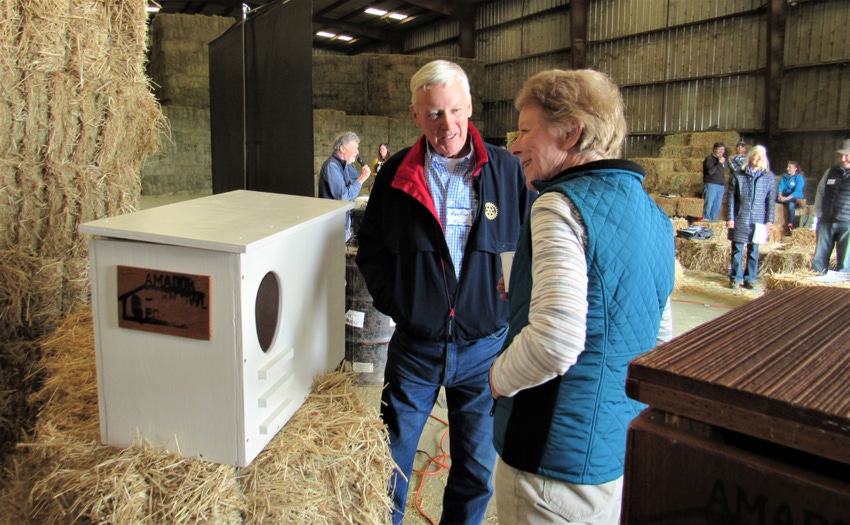
Placing nest boxes for bluebirds or barn owls in vineyards greatly increases the abundance of the Western bluebirds that can serve as a defense against harmful insects, according to the Wild Farm Alliance.
In field trials, the highest removal of insects – 59 percent – were closest to nests while analysis of feces showed that birds weren’t consuming many of the pests’ natural enemies, the Alliance notes.
In other studies, birds reduced insects about 33 percent more near nest boxes, and they reduced up to 98 percent of insects on the edges and interiors of vineyards, according to an Alliance-published booklet titled “Supporting Beneficial Birds and Managing Pest Birds.”
The booklet was one of many handouts given to about 50 attendees of a recent workshop on the benefits of encouraging some bird species near farm fields, cohosted by the Alliance and other resource and farm groups.
“Just as there are beneficial insects, there are beneficial birds,” the Alliance’s Jo Ann Baumgartner said during the March 19 gathering on a ranch near Woodland, Calif. “The idea is to support them when they’re good and keep them from feeding in the crop.”
Benefits of raptors
Bird boxes in vineyards were among numerous ideas discussed during the workshop, which covered various commodities from grains to walnuts. Speakers talked about the benefits of raptors and how to coexist with pest birds, and how hedgerows near or adjacent to farm fields can support birds’ pest control services.
The use of barn owls in vineyards is “an age-old concept,” as they keep rodents out naturally without the grower having to use trapping or unnecessary chemicals, box manufacturer Vineyard Concepts LLC says on its website.
Barn owls will eat most rodents, from gophers to rats and other creatures that damage crops, the company notes. But bluebirds are also beneficial and will eliminate the need for a majority of the pesticide use typical in vineyards, the manufacturer asserts.
At the Healdsburg, Calif., based Hawley Winery and Vineyard, 35-year winemaker John Hawley has also been a falconer for the last 15 years, according to the Wild Farm Alliance, which advocates for natural growing practices.
Falcons deter pests
Hawley believes having falcons on his farm drives away whatever pest birds might have otherwise been attracted, though he acknowledges his location may also have an impact.
“About the time the young pest birds leave the nest, they tend to go down in the valley a half-mile away, where there is more water and food resources,” he says in the Alliance booklet.
When a falcon is around, the surroundings get very quiet, which scares pest birds because they sense a predator, he says. He also uses bluebird boxes in the vineyard and places barn owl and kestrel boxes in open areas rather than woodlands, which keeps them out of the reach of predators that could feed on the birds.
In the Napa Valley’s St. Helena area, Tres Sabores Winery and Vineyards’ Julie Johnson has 50 Western bluebird boxes in her vineyard which are also used by insect-eating tree and violet-green swallows. To keep larger predatory birds from taking over the boxes, she uses metal hole ring boxes so the entrances can’t be enlarged, according to the booklet.
“In about 2000, people started looking at birds as pest-control partners,” says Baumgartner, adding that studies have shown that pest pressure has increased in areas where birds were excluded from crops.
About the Author(s)
You May Also Like






